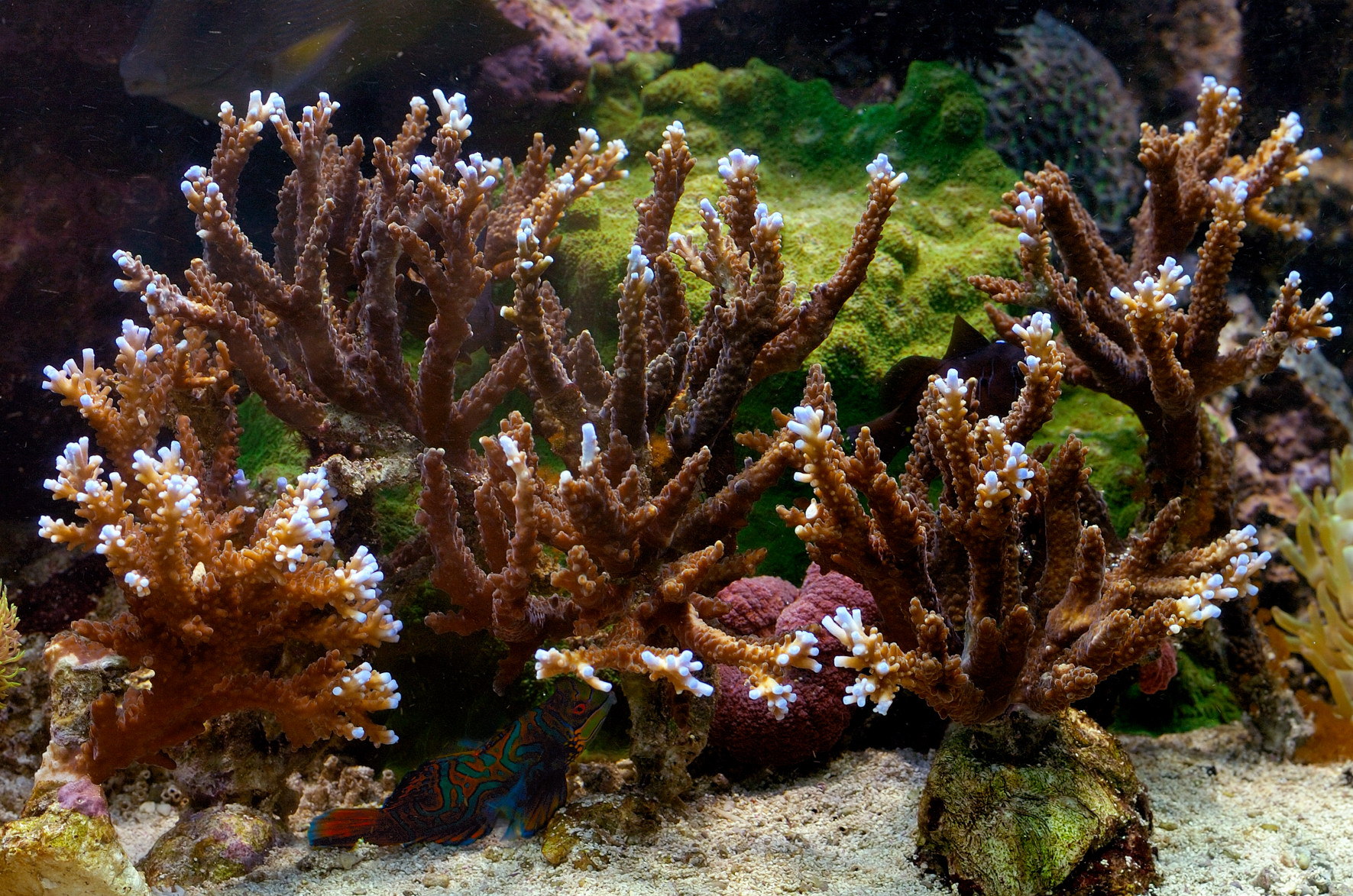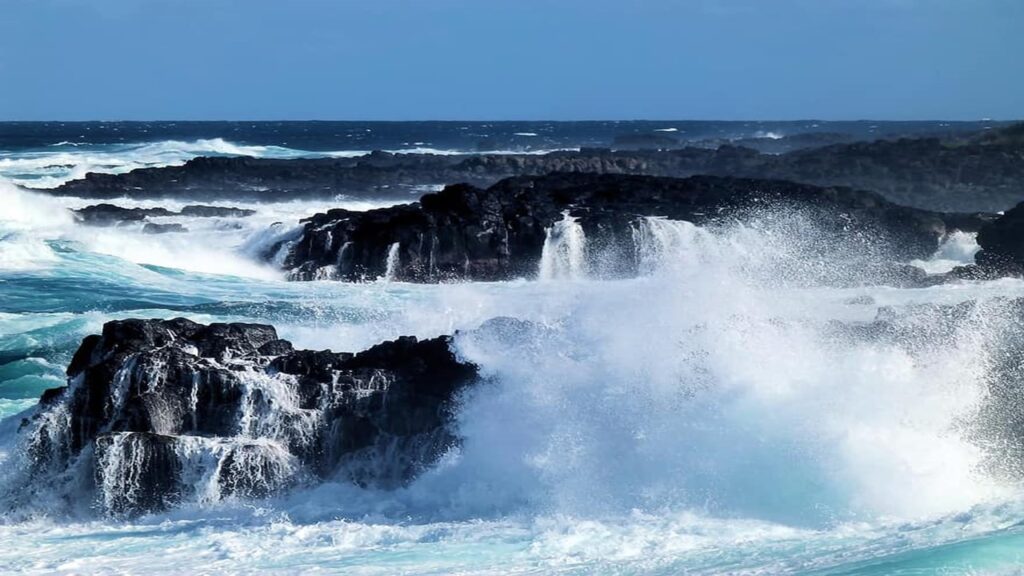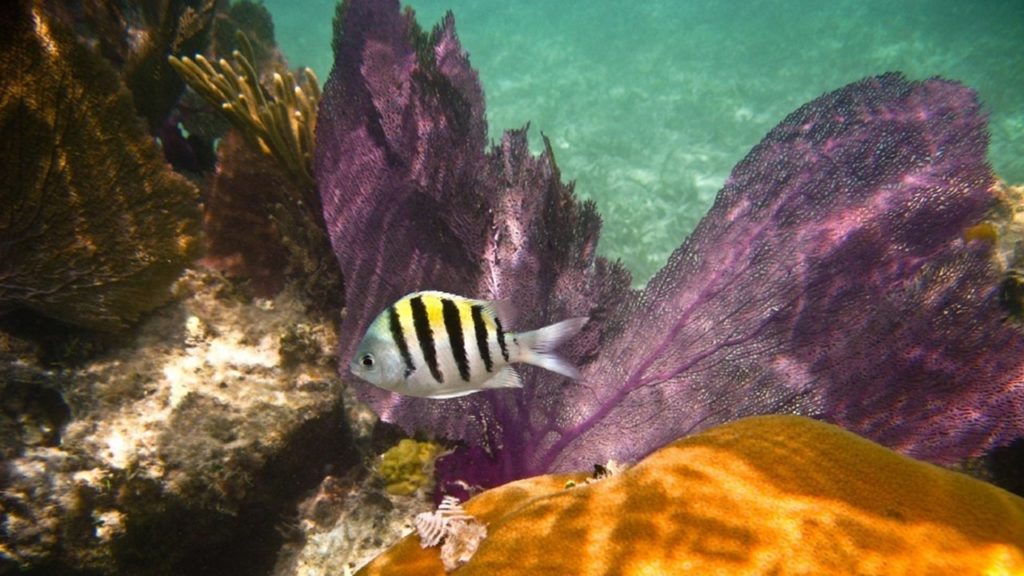Coral reefs of Mauritius: Types, Importance, Threats

Coral reefs of Mauritius are both outstanding marine environments and lethal threats to inexperienced navigators. Basically, the calm 243 km2 lagoon that Mauritius boasts of is due to a 150 km protective coral reef layer. This reef almost completely surrounds the island thus shielding it against violent waves. In this way, locals and tourists enjoy the serene beach atmosphere almost all year round.
Regions where coral reefs are absent in Mauritius
However, in the south of Mauritius, coral reefs are absent along an 18 km breach. Because of this, dangerous swells often crash on the coasts. Since they are in contrast with the calm waters around Mauritius, crashing waves at Souillac, for example, is an amazing view.

However, as climate change is leading to sea-level rise, violent waves are also impacting on coastal villages there. Riviere des Galets is such an example. As the sea level increases, waves penetrate further inland thus damaging infrastructure and property. In this case, the importance of protective coral reefs is clear.
Similarly, there is also a 13 km opening on the west coast of Mauritius. In the surroundings of Albion, coral reefs do not grow. Nevertheless, a time-tested lighthouse is still working at Albion to guide incoming ships at night.
Finally, coral reefs also do not grow near river mouths in Mauritius. The level of sediment and turbulence is too much for them to develop.
Reef formation in Mauritius
The formation of coral reefs around Mauritius dates approximately to 5000 years back [1]. The 1000-year-old brain coral at the Blue Bay Marine Park is the oldest coral of Mauritius. Currently, there are some 160 coral species in the waters of Mauritius [2].
Factors favouring coral growth
Coral reefs grow nicely around Mauritian because:
- The continental shelf is quite shallow and so allows just enough light to penetrate.
- Seawater is clear and warm with an average temperature of ⁓25⁰ C.
- Salinity of the sea lies around 35 ppt.
- Spring tides have top peaks of 0.83 m that do not drown coral polyps.
- The South East Trade Winds are moderate and do not infringe on coral development.
Types of coral reef in Mauritius
Five types of coral reef have been identified around Mauritius and its associated islands:
- Fringing reefs – Mauritius is mainly surrounded by fringing reefs. They protect the coastline leaving a shallow lagoon (15-45 m) in between.
- Atolls – Eventually, fringing reefs turn into atolls when seawater submerge volcanic islands. The St Brandon Archipelago of Mauritius, which consists of 22 atolls, formed in this way.
- Barrier reefs – Barrier reefs grow far from the mainland, especially on the coast of Mahebourg. They extend from Ile de la Passe to ⁓9 km northwards [2]. Fringing reef grows in its inner layers for over a distance of 1.5 km laterally along the shore. A 2 km (width) by 20 km (depth) canal separates the inner reef from the rest of the mould.
- Patch reefs – As for patch reefs, they grow in shallow waters around Mauritius where the seabed is high enough for coral to develop.
- Reef flats – Reef flats form as a result of fringing reefs that move seaward. They leave thick reefs behind that eventually flatten due to water movement. Reef flats do not occur around mainland Mauritius but around Rodrigues.
Coral reef system of Mauritius
The reef front
Basically, the reef front is the backside of the reef that is in direct contact with the open ocean. As such, it is subject to pressure from incoming waves and acts as a cushion against them. In general, the reef front of Mauritius displays a rugged outline with pits and valleys in between. The foot of the reef alone may reach ⁓ – 60 m. Various coral species grow at different depths of the reef. These include
- branching and stony corals like Acropora, Pocillopora, Stylophora, Millepora at 0 m to -5 m
- massive corals at -5 m to -15 m
- massive corals like Goniophora, Favia and Porites at -15m to -20 m
- skeletal corals at -25 m to -30 m and
- most types of corals such as Antipatharians and Alcyonacea grow together with algae below -30 m.
The reef platform
This is the upper surface of the coral reef that is visible from above. Mauritian reefs exhibit a closed network formation reaching 20 m on average. They are crisscrossed by rills that allow the free passage of water from the open ocean into the lagoon. The calm side of the reef is covered by stony corals, sea urchins and other echinoderms. However, the windward segment is dominated by skeletal coral and sea anemones.
The reef flat
The part of the reef that faces the coast is the reef flat. The width of the reef varies from place to place. Nevertheless, in general, it can be as big as hundreds of metres. It is also larger on the east coast. The depth of the reef is less than 1 m during spring tide but can be as deep as 20 m where canals are present. Only isolated colonies of Acropora develop due to silt coming from the land.
Canals and basins
The lagoon of Mauritius is characterised by the presence of canals and basins along the seafloor such as at Blue Bay. They are often as wide as 0.5 m to 1.5 km and as deep as 6 m to 35 m. Polyps grow on the sides of the reef. The middle part is covered with sediment and thus prevents polyps to grow.
Importance of coral reefs in Mauritius
Environmental reasons
Coral reefs are home to various marine creatures
The coral reefs of Mauritius are home to several magnificent organisms. Various creatures like fish, clams, sponges, starfish and turtles grow and depend on the coral reefs. The colourful scissortail sergeant fish swims in schools close to coral reefs mostly everywhere in Mauritius. Around the atolls of St Brandon, sea turtles thrive away from the human population. Where reefs are absent in Mauritius, oftentimes sharks glide into the lagoon.
Form part of the marine food web
The reefs provide food to these marine creatures as they are hotspots for marine life. As small organisms feed on the microscopic algae that grow on the reefs, larger animals eat them. In this way, an intricate marine food web exists around the coral reefs.
Additionally, coral reefs play a key role in protecting the coasts of Mauritius against violent waves, tsunamis and storm surge. They are also important grounds for marine creatures to reproduce and grow.

Socio-economic reasons
Tourism in Mauritius is due to coral reefs
Basically, the tourism industry of Mauritius is based on beach travel. Tourists fly from all over the world to Mauritius for its white beaches and calm lagoons. Without the protective coral reefs, Mauritius’ tourism would greatly decrease.
Today, the tourism sector is shifting to sustainable practices and eco-activities. Consequently, holiday planners and tour agencies are exploiting the marine heritage to give tourists unforgettable underwater experiences. Thus tourists can enjoy the magnificent coral ecosystem through diving, undersea walks and submarine trips.
Locals and youngsters enjoy the calm beaches
At the same time, locals also delight in coastal activities. Most families spend their weekends at the beach, swimming and snorkelling. Similarly, children and youngsters that grow in the coastal villages have fun swimming and catching crabs. If not for the coral reefs, all these activities would not be possible.
Healthy coral reefs sustain fishing
What’s more, commercial and recreational fishing is also important in Mauritius. The healthy coral reefs allow marine creatures to grow and develop. In this way, the fishing sector is sustained.
Research
Coral reefs are incredible sources of food and drugs. As such, future research into the coral reefs of Mauritius may provide such invaluable resources. In addition to that, fundamental information is locked up in reefs. Thus, they can help to examine past events and predict future impacts. Past sea level rise estimation in Mauritius has been carried out in this way [3].
Threats to the coral reefs of Mauritius
In the past decades, Mauritius lost some 50-60% [1] of its live coral cover. This is due to a number of anthropogenic and natural causes.
Anthropogenic threats
Polyps die because of too much turbulence
Human activities such as dredging and coastal development lead to siltation into the lagoons. With a large number of hotels and recreational centres on the coast, considerable turbulence occurs in the waters. Consequently, polyps die as they require clear water to grow.
Mangroves are cleared
Also, mangrove forests are very important pollution sinks. Pollutants coming from the land such as agricultural runoff and vehicle discharges are trapped in the sediment of mangroves. In this way, they do not enter the lagoons and harm coral reefs. However, many mangrove forests have been cleared and filled across the island. As a result, pollutants make their way to the reefs and prevent them from developing.
As an example, Pointe d’Esny beach, located in the south-east of Mauritius, has one of the clearest lagoons of the island. This is because of the Pointe d’Esny mangrove forest that traps sediment from the land. Hence, healthy coral reefs also develop there.
Additional factors
Additionally, processes like eutrophication, decreased salinity and light penetration further prevent coral reefs from growing.
Natural causes
Increase in sea temperature
One of the key reasons for coral death in Mauritius is attributed to ocean warming and subsequent coral bleaching. These bleaching events are normally associated with an increase in sea temperature due to global warming. Sometimes they are also because of El Nino events.
For instance, the most severe coral bleaching event in Mauritius occurred in 1998. More than 10% of the live coral cover died in places like Albion, Flic en Flac and Le Bouchon. Researchers suggest that an increase in sea temperature may have caused it. Conversely, an El Nino event took place in 2016. The band of warm water around Mauritius also had a great impact on the coral reefs.
Cyclones
As it is, cyclones too can damage coral reefs. Researchers noted this after the passage of cyclones Davina, Dina and Kalunde. In general, violent waves induced by cyclones directly destruct the reefs. Besides, intense rainfall on the coast leads to suspension of sediment in the sea. Sometimes, coastal landscapes can change and thus alter ocean currents. Together, they can change ocean chemistry and inhibit corals to grow.
Flash floods
Flash floods also impact on coral development. The sudden and intense rainfall can increase the amount of sediment into the sea. Consequently, the water becomes opaque and light cannot penetrate. If polyps do not get the right amount of light, they cannot grow well.
Natural predators
Interestingly, even coral reefs have natural predators in the marine environment. One such example is the crown of thorn starfish. Broadly speaking, the crown of thorn starfish causes a lot of damage to reefs as it feeds on them. It can also become invasive when it is in large amounts. Consequently, it can cause severe damage to reefs as noted in the Great Barrier reef of Australia. In Mauritius too, the crown of thorn starfish is a nuisance to the reefs. It attaches to the reefs and eats the polyps as it moves across the reef.
Coral reef management in Mauritius
In Mauritius, there are several policies and laws regarding the management and protection of coral reefs. As such, there is a number of fishing reserves, marine parks and delimitation of no-take zones. People also fish seasonally and with the right equipment. It is also prohibited to mine sand and coral as well as collect seashells and exploit sea cucumber.
Several legislations and guidelines are in place concerning coastal development. These include Environmental Impact Assessments, zonation, setback rules and maritime contingency plans. On the national level, there is the Integrated Coastal Zone Management framework. More recently, researchers are applying new techniques like coral farming and coral propagation to restore degraded reefs.
References:
- Moothien Pillay, R., Terashima, H., Venkatasami, A. and Uchida, H. (2002). Field Guide to Corals of Mauritius. Albion, Mauritius: Albion Fisheries Research Centre
- Saddul, P. (2002). Mauritius, A Geomorphological Analysis. Moka, Mauritius: MGI, pp 262-267
- Montaggioni, L.F. and Faure, G. (1997). Response of reef coral communities to sea level rise: a Holocene model from Mauritius (Western Indian Ocean). Sedimentology, 44, pp. 1053-1070.

Pingback: Negative effects of sea-level rise - Yo Nature
Pingback: Mauritius Oil Spill: Japanese MV Wakashio wrecks on reef - Yo Nature
Pingback: The Coastal and Marine Biodiversity of Mauritius - Yo Nature
Pingback: Why islands must protect their mangrove forests - Yo Nature
Pingback: Mauritius and its Marine Life - Yo Nature